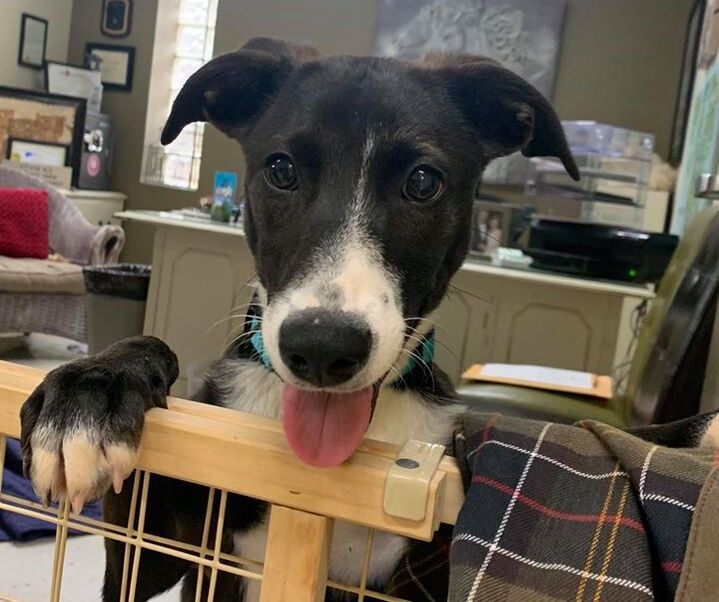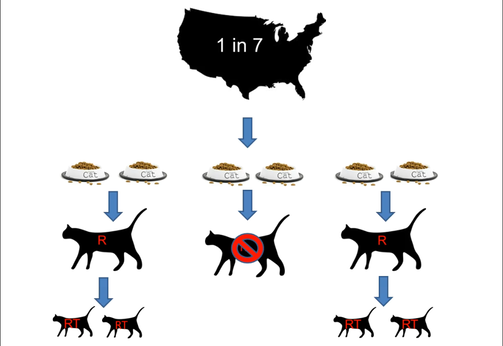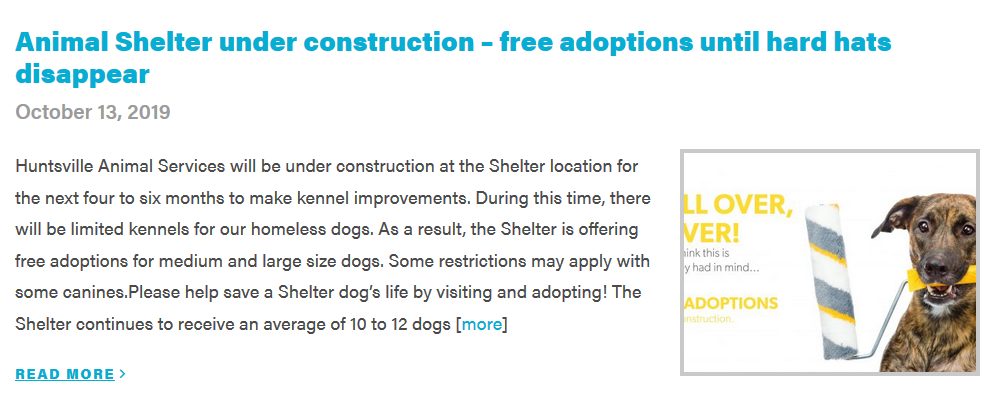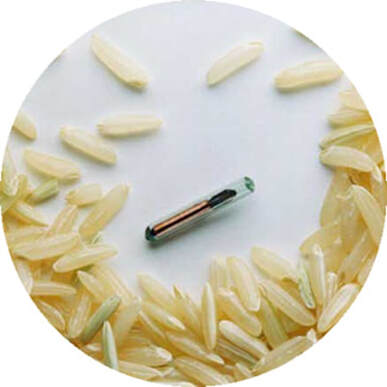|
As we begin another year, it’s time to share our Year in Review for 2019. We use this review to hit on the highlights of the year and to express our hopes for the future operation of Huntsville Animal Services. Live Release Rate Huntsville Animal Services ended 2019 with an overall live release rate above 90% for the fourth year in a row. This is good news. The Huntsville/Madison County area is now one of the safest places in the state for companion animals. We fully recognize that saving the lives of animals is incredibly hard work every day. We would like to see a higher live release rate for dogs, an issue that is an ongoing challenge for our area (see below about Dogs Destroyed).
 Foster and Sleepover Programs The shelter really ramped up focus on foster programs in 2019 toward getting animals out of the shelter and learning more about their personalities to find them homes faster. People can do a Foster-To-Adopt plan to try an animal in their home to see if the animal is a good fit. The shelter also worked hard to promote a Sleepover Foster Program which encourages people to foster animals over weekends and during holiday periods to help reduce the number of animals in the shelter and to help market animals using information from foster homes. There is now a website dedicated just to foster placement of animals. Foster programs like this are vital toward keeping the community engaged, reducing the number of animals in the shelter at any given time and helping potential adopters know more about the personality of animals outside the shelter environment, which is often nothing at all like how animals behave inside the shelter. Community Partnerships The year brought more partnerships between the animal shelter and local organizations toward marketing shelter animals in the community. The shelter held events at the Space & Rocket Center and Huntsville Botanical Gardens. It also partnered with the Historic Preservation Commission and the Huntsville-Madison County Convention & Visitors Bureau for holiday photos of adoptable dogs which show their personalities and to demonstrate that ours is a pet-friendly destination when people travel with their pets. Cat Programs The shelter began developing a community cat diversion program a few years ago and the city code was changed in November of 2018 to reflect changes in how cats are handled. The city now allows TNR and engages in SNR. “TNR” stands for trap-neuter-return. It refers to programs where animal advocates, either individuals or organizations, humanely trap free-roaming cats, have them altered, vaccinated, and ear-tipped, and return them to their habitats. “SNR” stands for “shelter-neuter-return.” It refers to a program where healthy free-roaming cats brought to the shelter by community members are referred to established TNR programs when available, or the cats are neutered, vaccinated, and ear-tipped and then returned to the area from which they were taken by the shelter itself. Cats can also be released as barn cats, provided they are suitable for a barn cat program due to their health. TNR and SNR are both designed to keep large numbers of cats from being destroyed in shelters which is what happens in most places. This article from Nathan Winograd, the founder of the No Kill Equation we promote, explains both TNR and SNR. In our recent communications with a campaign called The Million Cat Challenge, we were told that Huntsville Animal Services is one of the most widely recognized success stories in the animal sheltering community. By participating in the Million Cat Challenge, the euthanasia figures have plummeted year after year and the turnaround “has been incredible to witness.” Huntsville is considered a great example to other communities and Dr. Sheppard is considered a “dedicated leader” who is “highly engaged” on the topic of saving the lives of cats who would have been destroyed using old methods. (this image is from a presentation by Dr. Kate Hurley, Director of the UC Davis Koret Shelter Medicine Program, Million Cat Challenge. To view the presentation, click on the image) Additional Veterinarian The Huntsville Animal Services Director is Dr. Karen Sheppard, a licensed veterinarian. While it may seem to make perfect sense for a veterinarian to run an animal shelter, the director job is more of an administrative role than a veterinary role. The city is in the process of recruiting and hiring a second veterinarian to perform spay/neuter surgeries at the shelter in addition to providing veterinary care. The city tells us this will save money in the long run. Although we cannot possibly place a value on the services provided by the North Alabama Spay and Neuter Clinic to our community (it is one of only four non-profit clinics in the state) we recognize that the city has the right to explore more cost-effective functioning moving forward. Hiring a second veterinarian is not a cheap proposition; we remain hopeful that this new position will pay for itself over time in dollars saved. When we learned of this plan, we asked the city to consider hiring a contract behaviorist to help at-risk dogs and to also hire a programs employee to focus on surrender counseling and adoption counseling. Our argument was that if the city could afford a second veterinarian, perhaps there was a way to spend a little more money for increased life-saving. Website and Marketing The shelter has a reworked website which is engaging and informative. The shelter staff and volunteers continue to do an excellent job of marketing pets using Facebook and the city’s website. It is now much easier to find information about the operation of the shelter than in years past. There are regular adoption promotions and programs which are creative and which keep the public engaged toward adopting or fostering a shelter animal. Fee-waived adoption specials are promoted regularly which serve as an incentive to encourage people to adopt sooner rather than later. Volunteers take engaging photographs of shelter animals which are positive and which make people feel good (which work much better than depressing photographs of scared animals in kennels). Renovations The shelter is undergoing a renovation project years in the making. The first part of the project is the Cat World area which was completed in December of 2016. The shelter is now improving the kennel area for dogs. The city stresses that it is not adding to capacity for dogs, but is making the living area for dogs larger to reduce stress. Each dog will have a “bedroom” kennel area and a “bathroom” area, making it easier to keep kennels clean and reducing stress for dogs who are particularly fearful. The construction is expected to be completed by April 2020. Adoption fees for all animals are waived until the construction ends. Dogs Destroyed The shelter continues to have issues with destroying dogs for behavior, particularly dogs over 40 pounds. Dogs are destroyed each month who are deemed a public safety risk either because they are considered dangerous to people or other animals. March of 2019 was the worst month for dogs. Thirty-one dogs were destroyed for behavior in March, almost half of whom came from one owner who had never socialized the dogs to people. In most months, the number of dogs destroyed for behavior ranges from 15 to 20 dogs. We believe this number is high. The shelter website says the following about this issue: Large dogs over 40 pounds that are aggressive to cats, other dogs, and people are considered a public safety issue by Huntsville Animal Services, and if they are accepted into the shelter they will be humanely euthanized. At this time our community does not have the needed resources to humanely and safely modify these large dog’s behaviors. We are told the shelter takes in a lot of dogs who have never been properly socialized to people or other animals which creates issues with their placement. We acknowledge that to be true. There are most certainly dogs who may require more work or longer foster placements to resolve problem behaviors and to get them out of the shelter where they may degrade over time. Some dogs have cognitive issues which make them genuinely dangerous and who cannot be adopted out into our community. We have recommended for a period of years that the city hire a contract behaviorist to address the needs of the dogs most at risk of death in our shelter for behavior. Shelters are incredibly stressful places for all animals and the lives of dogs should not be ended just because the shelter environment itself causes them stress. If the city can afford to hire a second veterinarian, our argument is that it can also afford a behaviorist not only to keep more dogs alive but to keep the community safe. The community may currently lack the “needed resources” to care for the dogs, but can work to acquire those resources over time. Datasets of Note (which relate primarily to factors outside the control of the shelter) Owner Requested Euthanasia (ORE). Huntsville Animal Services provides euthanasia services to people upon request for a fee and upon request. It is understood that some people lack the resources to have their own veterinarian euthanize a pet who is suffering. Having said that the ORE numbers have gone up drastically over the years. In 2015, 4 animals were destroyed at the request of owners. That number hit a high of 60 animals in 2017 and was down to 51 in 2018. In 2019, the number was 71 (67 dogs and 4 cats). This rise in ORE is troubling due to the spike in numbers. It is possible that people simply did not know that the shelter provided this service in the past and are now taking advantage of the service now that they are aware of it. Animals Running at Large. The number of animals found running at large each year has remained essentially the same for the last five years. It was 4,542 in 2019 (up about 300 animals from 2018). We see this as a failure of the public to keep pets contained, ensure pets can be identified if lost, and go to the shelter to look for lost pets. Having said that, the shelter does make it somewhat difficult to find lost pets due to limited operating hours – the shelter is primarily open when people are at work and serves a large geographic area where it can take a while to travel to the shelter. We are told that most of the animal intake comes from known areas of the city and county. We feel it is up to the shelter to take steps to address “problem areas” and not just hope that the situation will improve. We feel strongly that proactive community outreach can go a long way toward modifying public behavior to lower the number of animals found running at large. Owner Surrenders. The number of owner surrenders has been cut almost in half due to a process called managed intake. The surrender number in 2019 was 546 (it was 1,029 in 2015). Managed intake is a process by which people who seek to surrender an animal are provided with information and counseling to find alternatives to surrendering the pet. Although many people think the shelter is obligated to take owned animals, it is not. The shelter does work with people to try to find alternatives as a first choice, but then will take owned animals when space becomes available in an effort to find the animal a new home. Transfer to Rescue Groups. The number of animals transferred to rescue groups has dropped drastically from a high of 1,065 animals in 2015, to 556 animals in 2018, and now to 619 animals in 2019. We see this as symptomatic of the progress at the shelter. Because rescue groups view animals in other shelters as being more at risk of death, they focus more on outlying areas to save animals housed in kill shelters. We hope local rescue groups will find ways to balance their life-saving efforts between Madison County and other counties in 2020. The role of rescue groups in removing animals from the shelter is key to continued progress. Return to Owner. The number of animals returned to owners has remained about the same in the last five years. It was 729 animals in 2015 and was 785 animals in 2019.This is a result not only of people failing to ensure their pets can be identified, but also failing to go to the shelter to look for them if they are lost. The shelter’s limited operating hours do not help this process because many people cannot get to the shelter while it is open. Having a pet microchipped is an inexpensive way to ensure pets can be identified and get back home not only if lost, but also if stolen. To help pets be identified, we will promote our annual “Chipathon” in March, thanks to Dr. Eric Hulsey at Bentley Animal Hospital. Chipping will be provided for $20, including the registration, as has been the case in years past for this event. Looking Forward
We applaud the progress made by the City of Huntsville, the shelter leadership, shelter staff, volunteers, adopters, fosters, donors and the community to make Huntsville Animal Services a place of hope and new beginnings. This is not an “us v. them” situation. It is a we situation. In order for our shelter to maintain the progress achieved to date, we must all make better personal choices which affect how the shelter operates. Although many people do not give the shelter operation much thought, decisions about pet containment, spay/neuter, microchipping, socialization and resolving problem behaviors at home absolutely affect the level of service the shelter provides to us all. We hope the city will continue to work to improve the live release rate by fine-tuning programs and continuing to keep the community engaged. We recognize that the city has to work hard to keep the shelter in the public eye on an ongoing basis. We will continue to seek media coverage for the shelter whenever we can to applaud progress, promote programs or notify the public of issues which require their attention and assistance. We do hope that the city will give serious consideration to hiring a part-time behaviorist or acquiring some other resources to keep more dogs alive in the future. We are told by Dr. Sheppard that the shelter has hopes of implementing the Pets For Life Program promoted by the Humane Society of the United States. This is a program that helps people who face financial challenges care for their pets and keep them in existing homes. This type of outreach may help people make better choices which prevent pets from entering the shelter at all. Absent the city hiring a behaviorist, we are hopeful one of our existing rescue groups will decide to make saving at risk dogs in the shelter a priority in the coming year by devoting some resources to just those dogs who are most at risk in the shelter environment. This may involve placement in foster homes for longer periods of time and may require consultation with a behaviorist or trainer to prepare those dogs to be adopted into loving homes. Stay tuned! We think 2020 will be a great year for Huntsville Animal Services!
0 Comments
|
No Kill Huntsville
Keep up with our updates and latest news regarding Huntsville becoming a no kill community. Archives
January 2022
Categories
All
image courtesy of Terrah Johnson
|





 RSS Feed
RSS Feed
